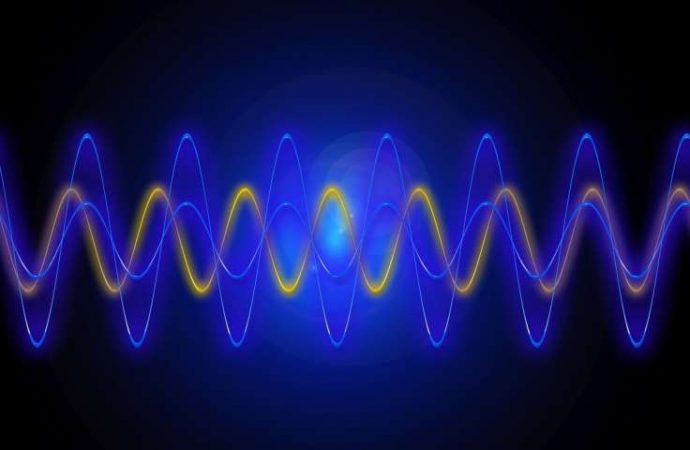A trio of physicists with Columbia University is making waves with a new theory about phonons—they suggest they might have negative mass, and because of that, have negative gravity.
Angelo Esposito, Rafael Krichevsky and Alberto Nicolis have written a paper to support their theory, including the math, and have uploaded it to the xrXiv preprint server.
Most theories depict sound waves as more of a collective event than as physical things. They are seen as the movement of molecules bumping against each other like balls on a pool table—the energy of one ball knocking the next, and so on—any motion in one direction is offset by motion in the opposite direction. In such a model, sound has no mass, and thus cannot be impacted by gravity. But there may be more to the story. In their paper, the researchers suggest that the current theory does not fully explain everything that has been observed.
In recent years, physicists have come up with a word to describe the behavior of sound waves at a very small scale—the phonon. It describes the way sound vibrations cause complicated interactions with molecules, which allows the sound to propagate. The term has been useful because it allows for applying principles to sound that have previously been applied to actual particles. But no one has suggested that they actually are particles, which means they should not have mass. In this new effort, the researchers suggest the phonon could have negative mass, and because of that, could also have negative gravity.
To understand how this is possible, the researchers use a fluid-filled container as an example. In a cup of water, the water particles are denser in the bottom of the cup than are those at the top—this is because gravity is pulling them down. But it is also commonly known that sound moves faster when moving through denser material. So what happens to the phonon as it encounters this difference? The researchers suggest it would deflect upward, exhibiting qualities of negative gravity. They suggest further that the same thing could be happening with sound in the air around us, causing it to rise slightly. They acknowledge that such a rise would be too small for current equipment to measure, but note that improvements in technology could someday soon prove their theory to be correct.
Source: Phys.org

































Leave a Comment
You must be logged in to post a comment.